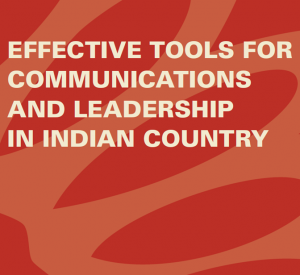There are currently 574 federally recognized tribes in the U.S. with other tribes that have received state recognition, and still others not yet formally unrecognized.
Every tribe is unique in political structure, culture, tradition, geography, size, and history. “Native Americans have a long and varied history of storytelling and culturally unique ways of communicating with one another and with other communities.”
This page includes links to existing resources, readings, and other materials that may be useful.
It is critical to remember that tribes are sovereign nations with their own governments. Respect their status and learn and respect their protocols.
Your primary goal should be to create authentic and meaningful long-term relationships with tribal people and communities above any other objective or motivation.
- Effective Tools for Communication and Leadership in Indian Country by National Congress of American Indians
- Tips and Strategies for Approaching Tribal Leaders by National Indian Health Board
- Top 10 Considerations When Engaging with American Indian Tribes by Cultural Heritage Partners
- Culture Card: Engaging Tribal Leaders and Other Tribal key players for Prevention Efforts
- Culture is Prevention: Connecting Prevention Specialists to Native Communities
- Cultural Connectedness: Connecting Prevention Specialists to Native Communities
- Steps for Conducting Research and Evaluation in Native Communities
